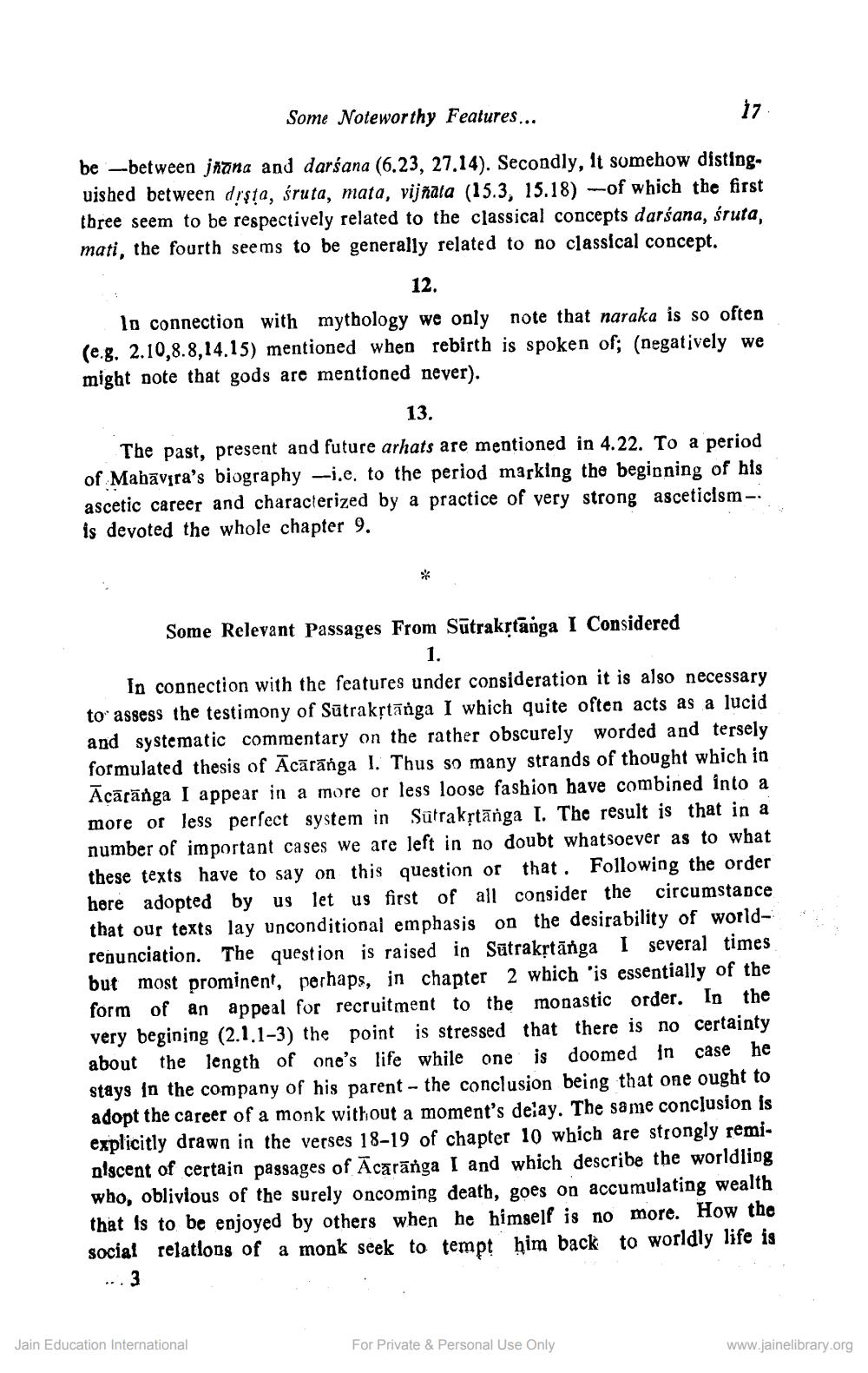________________
Some Noteworthy Features...
17
be --between jnana and darśana (6.23, 27.14). Secondly, It somehow distinguished between drşta, śruta, mata, vijñata (15.3, 15.18) -of which the first three seem to be respectively related to the classical concepts darśana, śruta, mati, the fourth seems to be generally related to no classical concept.
12.
lo connection with mythology we only note that naraka is so often (e.g. 2.10,8.8,14.15) mentioned when rebirth is spoken of; (negatively we might note that gods are mentioned never).
13.
The past, present and future arhats are mentioned in 4.22. To a period of Mahāvıra's biography -j.e. to the period marking the beginning of his ascetic career and characterized by a practice of very strong asceticism - is devoted the whole chapter 9.
Some Relevant Passages From Sūtrakstānga I Considered
1. In connection with the features under consideration it is also necessary to assess the testimony of Sūtrakstānga I which quite often acts as a lucid and systematic commentary on the rather obscurely worded and tersely formulated thesis of Ācārānga I. Thus so many strands of thought which in Acāränga I appear in a more or less loose fashion have combined into a more or less perfect system in Sūtrakrtānga I. The result is that in a number of important cases we are left in no doubt whatsoever as to what these texts have to say on this question or that. Following the order here adopted by us let us first of all consider the circumstance that our texts lay unconditional emphasis on the desirability of worldrenunciation. The question is raised in Sūtrakrtānga 1 several times but most prominent, perhaps, in chapter 2 which is essentially of the form of an appeal for recruitment to the monastic order. In the very begining (2.1.1-3) the point is stressed that there is no certainty about the length of one's life while one is doomed in case he stays in the company of his parent - the conclusion being that one ought to adopt the career of a monk without a moment's deiay. The same conclusion is explicitly drawn in the verses 18-19 of chapter 10 which are strongly reminiscent of certain passages of Ācārānga I and which describe the worldling who, oblivious of the surely oncoming death, goes on accumulating wealth that is to be enjoyed by others when he himself is no more. How the social relations of a monk seek to tempt him back to worldly life is
Jain Education International
For Private & Personal Use Only
www.jainelibrary.org




